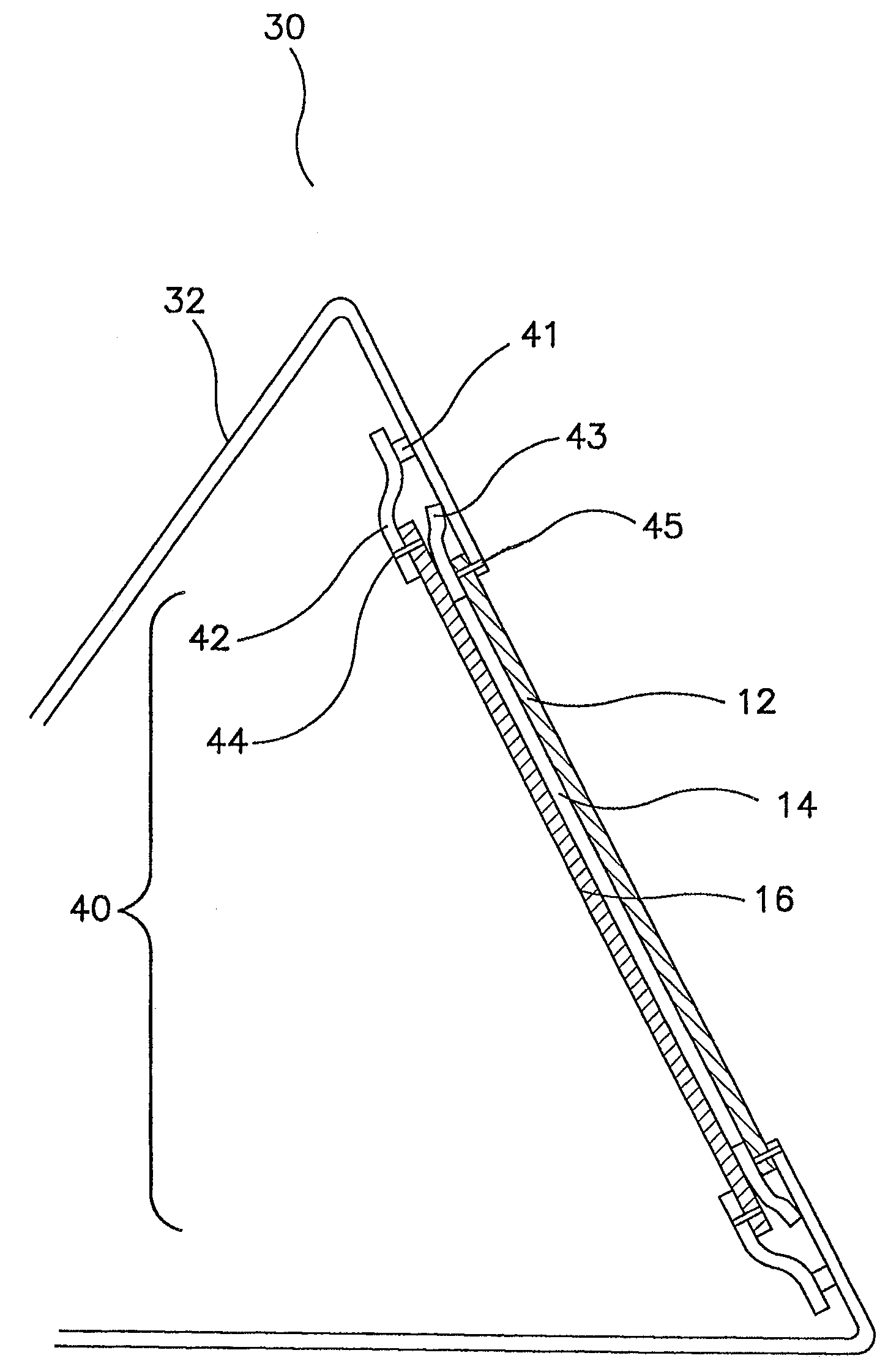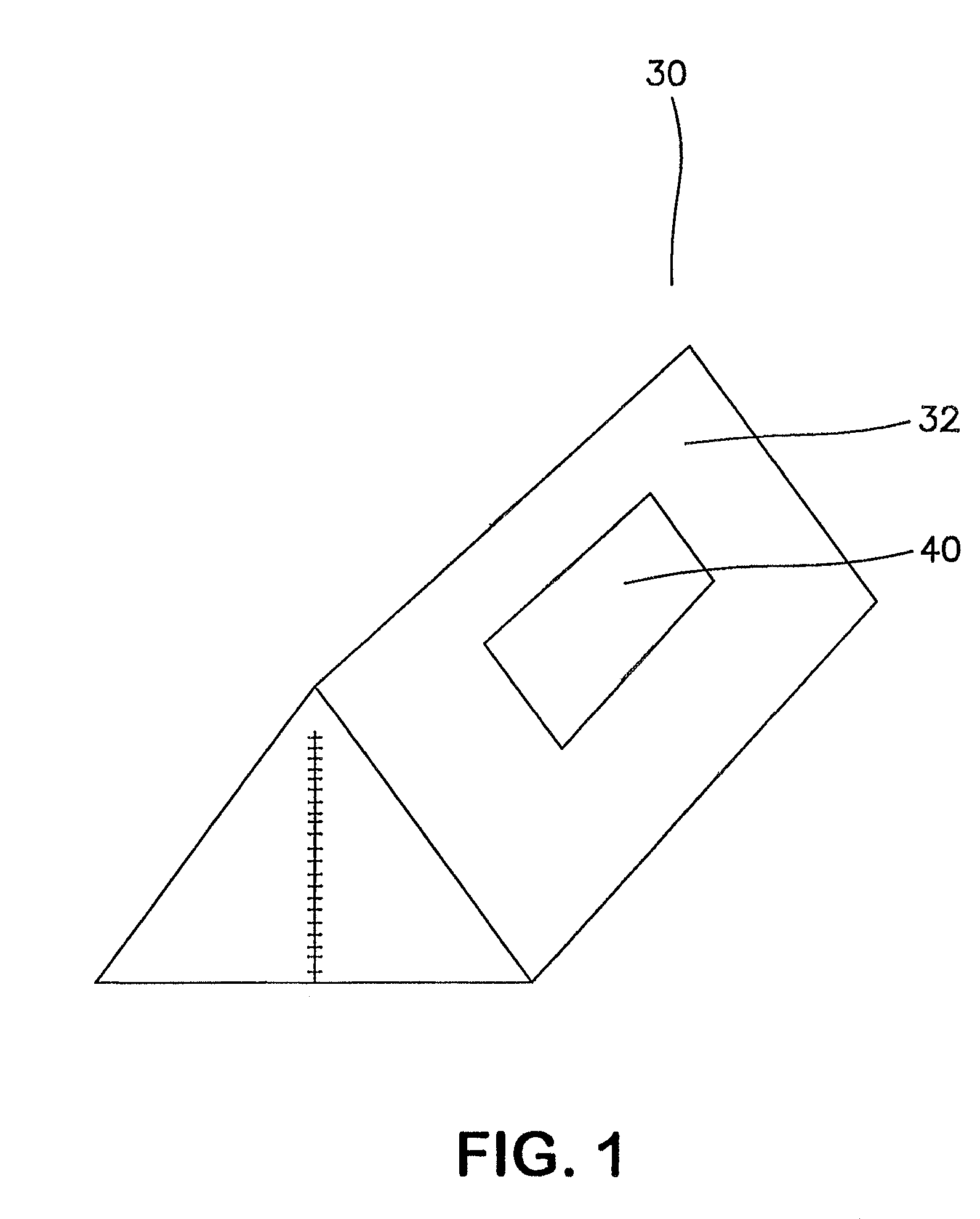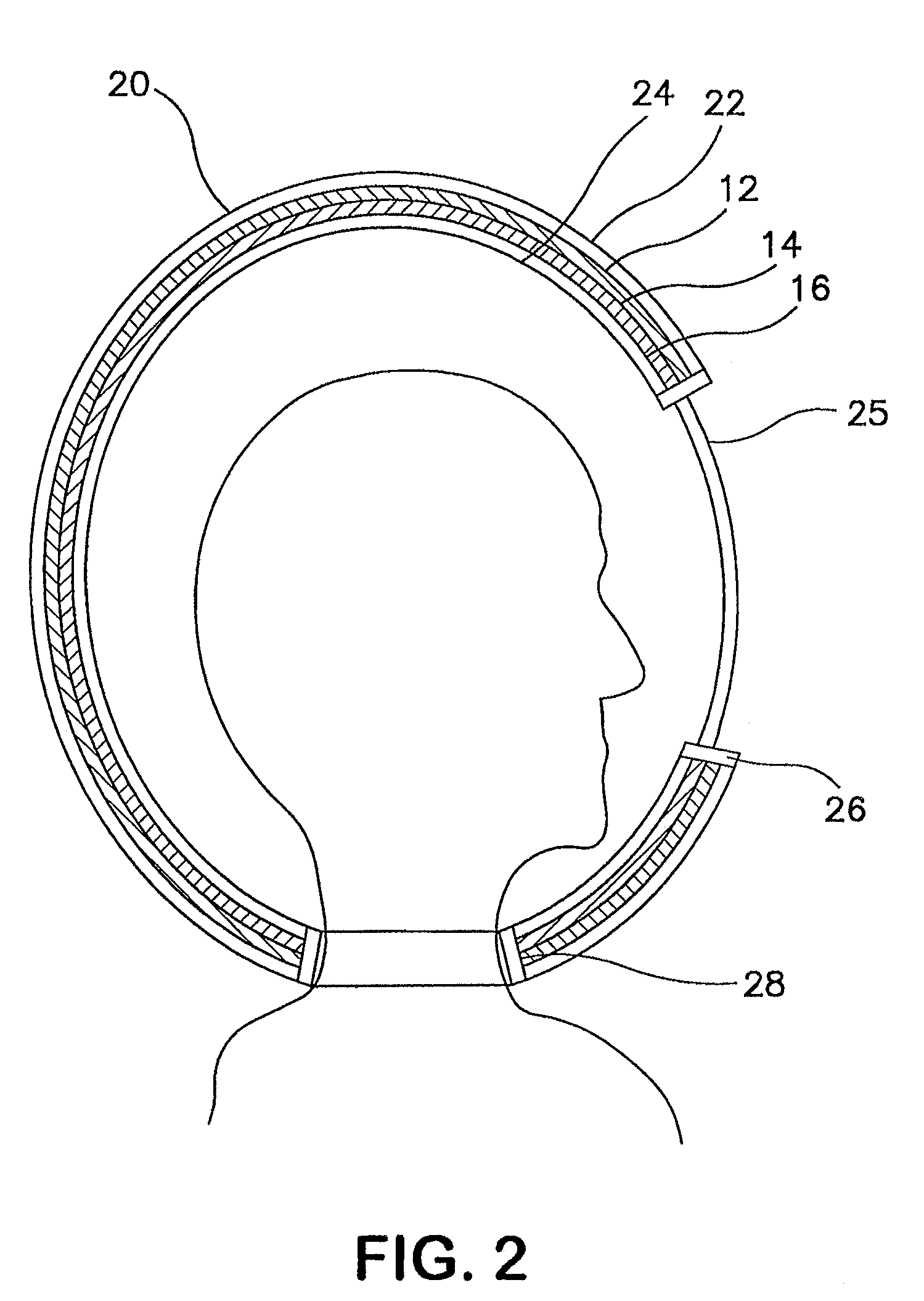Protective enclosure
a protective enclosure and protective technology, applied in the field of chemical protective enclosures, can solve the problems of increasing the residence time of the agent in the chemical protective material, and achieve the effect of high protection
- Summary
- Abstract
- Description
- Claims
- Application Information
AI Technical Summary
Benefits of technology
Problems solved by technology
Method used
Image
Examples
example 1
[0051]A preferred embodiment comprising the diffusive protective panel of the present invention was constructed comprising an air diffusive portion and a chemical protective material. Experiments were conducted to determine the number of layers and the weight of carbon required to provide a desired level of protection from permeation of chemical agents through the material. The chemical protective material (16) samples of this example were prepared based on activated carbon. A swatch of material containing activated carbon beads was cut from the liner of a Saratoga® suit (Texplorer® GmbH, Nettetal, Germany). The approximate areal density of carbon in the liner according to the literature was 180 g / m2. In an attempt to independently confirm this areal density, the liner was carefully deconstructed, and the beads mechanically removed. The measured carbon areal density was about 180-200 g / m2. Samples of carbon hereafter referred to as ‘carbon layer A’, were cut from the liner material ...
example 2
[0063]In this example, the constructions of Example 1 were tested against HD and Sarin (GB) chemical warfare agents. Vapor challenges at 40 mg / m3 and 1000 mg / m3, respectively, held continuously, were tested using swatch testing in a dual flow configuration according to TOP 8-2-501, as described previously. Constructions consisting of either one or three layers of ‘carbon layer A’ in combination with ‘face textile B’ were subjected to the HD or GB vapor challenge. The data from these tests were then used to determine the total cumulative breakthrough measured in μg / cm2 at 20 hours as shown in Table 3.
[0064]The time required for a person to have a 50 percent chance of either death (LCt50) or permanent damage (ECt50), was calculated from the total cumulative breakthrough values in Table 3. An explanation of these calculations is given in “Review of Acute Human Toxicity Estimates for Selected Chemical Warfare Agents.”
[0065]To convert the breakthrough values to a concentration*time value...
example 3
[0072]The liquid-proof characteristic of this invention was determined using the Suter test method described above. Because the chemical protective material of each embodiment was not expected to be waterproof, the suter testing was conducted on the face textiles “A” and “B” described above. Embodiments constructed with face textile B all did not leak after 3 minutes at 1 psi water pressure. In contrast, all embodiments constructed with face textile A leaked as soon as the water pressure began to register on the pressure gauge.
PUM
| Property | Measurement | Unit |
|---|---|---|
| pressure | aaaaa | aaaaa |
| thickness | aaaaa | aaaaa |
| air pressures | aaaaa | aaaaa |
Abstract
Description
Claims
Application Information
 Login to View More
Login to View More - R&D
- Intellectual Property
- Life Sciences
- Materials
- Tech Scout
- Unparalleled Data Quality
- Higher Quality Content
- 60% Fewer Hallucinations
Browse by: Latest US Patents, China's latest patents, Technical Efficacy Thesaurus, Application Domain, Technology Topic, Popular Technical Reports.
© 2025 PatSnap. All rights reserved.Legal|Privacy policy|Modern Slavery Act Transparency Statement|Sitemap|About US| Contact US: help@patsnap.com



